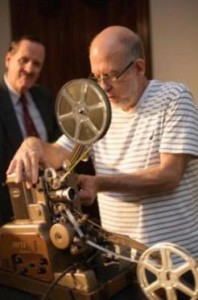I Spry: dramatising history
 Encore visited the set of the ABC espionage drama-documentary I Spry. Director Peter Butt, producer Anna Grieve, wardrobe designer Beverley Freeman and DOP Calvin Gardiner spoke to Aravind Balasubramaniam about the research that went into recreating the feel of the 1950s, and the importance of revisiting those shadowy parts of the country’s history that have got lost over time.
Encore visited the set of the ABC espionage drama-documentary I Spry. Director Peter Butt, producer Anna Grieve, wardrobe designer Beverley Freeman and DOP Calvin Gardiner spoke to Aravind Balasubramaniam about the research that went into recreating the feel of the 1950s, and the importance of revisiting those shadowy parts of the country’s history that have got lost over time.
Historian and award-winning filmmaker Peter Butt’s latest production for the ABC, I Spry, is the dramatised documentary on perhaps Australia’s greatest spy Sir Charles Chambers Fowell Spry and his time in office. Spry was appointed by Prime Minister Robert Menzies, at the heat of the Cold War in the 1950s, as director-general of the ASIO [Australian Security and Intelligence Organisation]. He is played by stage and film actor Tony Llewellyn-Jones.
Peter Butt, who has familiarised himself well with the place of espionage and intelligence in Australian history has also produced other documentaries on the subject such as Lies, Spies & Olympics and Fortress Australia. But the impetus behind I Spry was only realised in the recent past.
“A lot of my films have dealt with government and top secret documents that have been released after many years, and for some of the stories I’ve had to delve into ASIO documents to give me an insight into intelligence and espionage in Australia. About four to five years ago, I thought about doing a series on ASIO and that didn’t come about for a number of reasons. Nevertheless, I thought it was still a subject worth pursuing”, said Butt.

